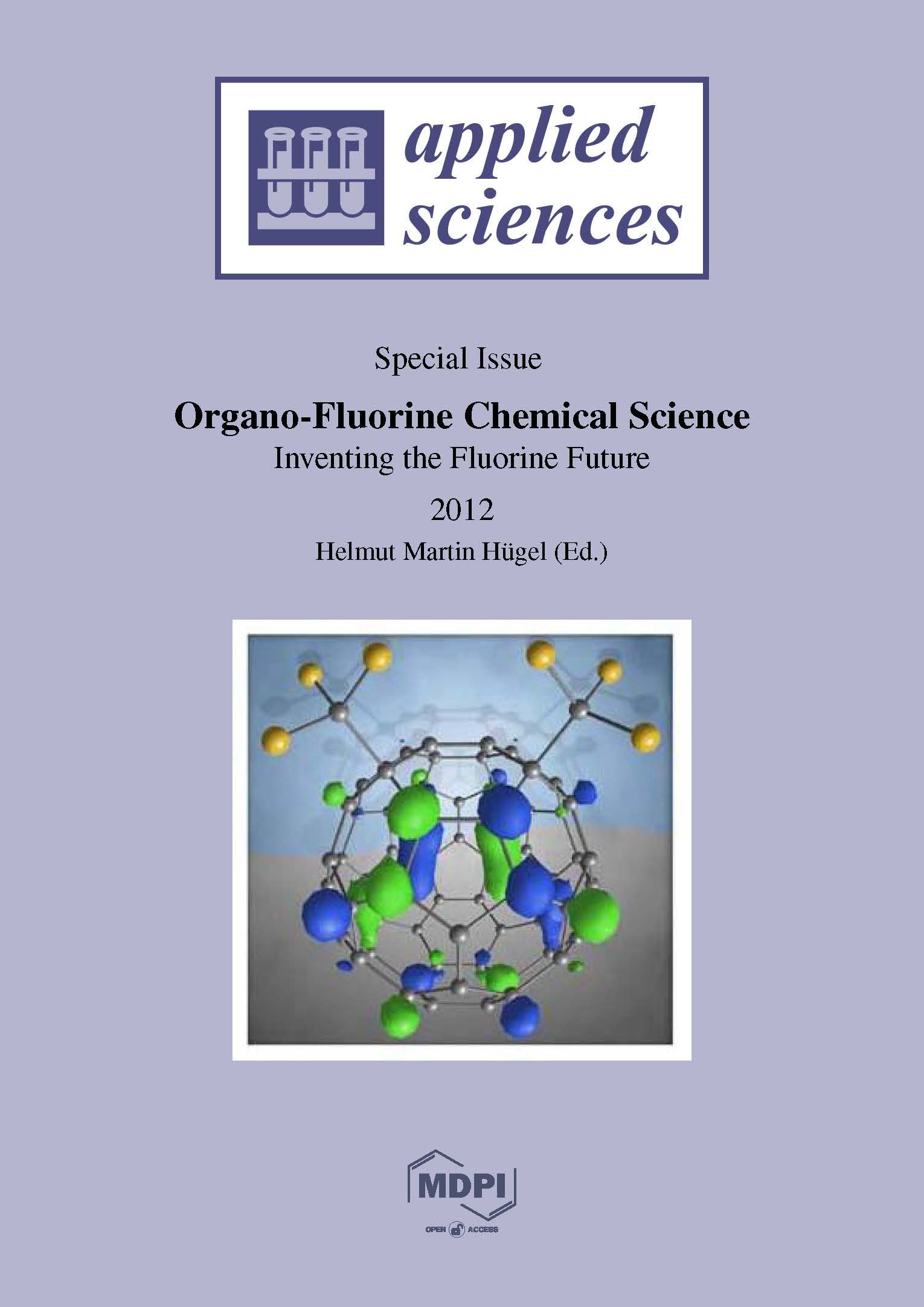Organo-Fluorine Chemical Science
A special issue of Applied Sciences (ISSN 2076-3417). This special issue belongs to the section "Chemical and Molecular Sciences".
Deadline for manuscript submissions: closed (15 October 2015) | Viewed by 202696
Special Issue Editor
Interests: clinical and medicinal chemistry; chinese herbal medicine; chemical synthesis of natural and bioactive products; greener chemistry; sustainable chemistry; fragrance chemistry; microwave chemistry
Special Issue Information
 |
Printed Edition Availble A printed edition of this special issue is available: Special Issue |
Dear Colleagues,
The unique properties imparted on molecules by fluorine substitution, continues to be the subject of intense research as the products have widespread application in all areas of science. Incorporation of fluorine can productively and unpredictably modulate several properties that interest medicinal chemists. Selected drugs for the treatment of high cholesterol such as LipitorⓇ by Pfizer, CrestorⓇ by AstraZeneca, ZetiaⓇ by Merck/Schering-Plough and LescolⓇ by Novartis all of which contain one or more fluorine atoms that increase metabolic stability, rank amongst the highest selling prescription drugs ever developed. Without doubt every current drug discovery and development program includes and evaluates fluorine-containing drug candidates. A one step 18F-labeling of peptides that contain a specific arene group has emerged that is rapid and simple to perform for 18F PET (positron emission tomography) an in vivo imaging technology for medical use has potential wide application. The synthesis of many pharmaceuticals and agrochemicals with fluorine atoms or groups is closely dependent on the development of new chemical methodologies by organic and industrial chemists. Monofluoroalkenes are known as nonisomerable, nonhydrolyzable stable bioisosteres of amide bonds and recently published highly enantio- and diastereoselective organocatalytic monofluorovinylations reactions have led to the isolation of monofluorovinylated products. A practical methodology for the enatioselective a-fluorination of ketene enolates has been optimized by the utilization of a three-component catalysis system provides an array of a-fluorocarboxylic acid derivatives. A generally useful coupling protocol for copper-catalyzed 1H-perfluoroalkane arylation by aryl iodides allows ready access to a range of perfluoroalkyl substituted aromatic compounds. Tetrafluoroethylene (TFE) is the organofluorine feedstock for the production of poly-(tetrafluoroethylene)polymers that have many applications. The transformation of TFE to a,b,b,-trifluorostyrenes via palladium-catalyzed coupling and arylzincs has been achieved in excellent yields and paves the way to new fluorine-polymers. The deployment of a fluorine substituted conjugated polymer in photovoltaic cells exhibited medium band gap yields above 7% attributed in part to the increased hole mobility of the fluorinated polymer. Organo-fluorine chemistry has had an enormous global impact on science and society, the fluorine fever continues to flourish and grow and we are delighted that experts in this field have agreed to contribute their research achievements to this special issue.
Dr. Helmut Martin Hügel
Guest Editor
Keywords
- fluorinated drugs
- fluorine-medicinal chemistry
- perfluorinated heterocycles
- fluorous mixture synthesis
- fluorine-chemical biology
- fluorine-chemistry
- fluorine-toxicology
- fluorine-industry
- fluorine-products
Benefits of Publishing in a Special Issue
- Ease of navigation: Grouping papers by topic helps scholars navigate broad scope journals more efficiently.
- Greater discoverability: Special Issues support the reach and impact of scientific research. Articles in Special Issues are more discoverable and cited more frequently.
- Expansion of research network: Special Issues facilitate connections among authors, fostering scientific collaborations.
- External promotion: Articles in Special Issues are often promoted through the journal's social media, increasing their visibility.
- e-Book format: Special Issues with more than 10 articles can be published as dedicated e-books, ensuring wide and rapid dissemination.
Further information on MDPI's Special Issue polices can be found here.





